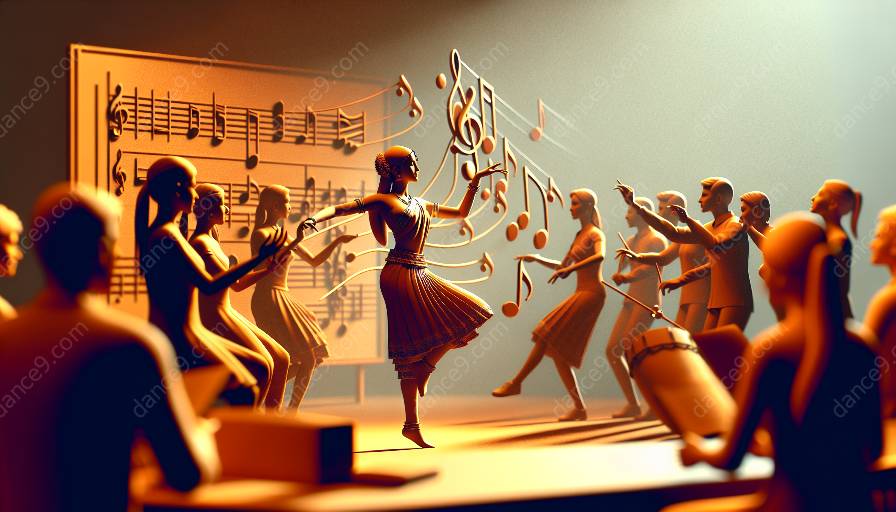Rhythm is an essential element in both dance and music, profoundly impacting the relationship between the two art forms. In this topic cluster, we delve into the significance of rhythm in dance and music, exploring its influence on the coordination of movement and sound, its role in evoking emotions, and its relevance in dance studies.
The Interplay of Rhythm in Dance and Music
Rhythm serves as the heartbeat of dance and music, connecting the two art forms in a harmonious partnership. It dictates the pace, timing, and flow of movements in dance, while simultaneously guiding the composition and structure of musical pieces. Whether it's the pulsating beat of a drum in a tribal dance or the melodic cadence of a classical ballet, rhythm sets the stage for expression and creativity.
Rhythmic Coordination and Expression
In dance, rhythm acts as a unifying force, aligning the physical movements of dancers with the musical beats and tempo. The intricate footwork in flamenco, the graceful leaps in ballet, or the syncopated movements in hip-hop all demonstrate the diverse ways in which rhythm influences the choreographic elements of dance. Similarly, in music, rhythm dictates the pace, intensity, and dynamics, shaping the emotional narrative and providing a foundation for dancers to convey their expressions.
The Role of Musicality in Dance
Understanding rhythm in music is pivotal for dancers to embody musicality, the ability to interpret and express the nuances of the music through movement. Whether it's the syncopated rhythms of jazz music or the fluid melodies of contemporary compositions, dancers must internalize the rhythmic patterns and accents to convey the music's essence effectively.
Rhythm and Emotions
The interplay of rhythm in dance and music extends beyond technical proficiency, as it also holds the power to evoke emotions. The pulsating beats of percussion instruments can incite primal energy, while the gentle waltz melodies can elicit a sense of nostalgia or romance. In dance, the rhythmic patterns and accents can amplify the emotional depth of a performance, allowing dancers to convey joy, sorrow, passion, and a myriad of sentiments through their movements.
Rhythmic Variations and Innovation in Dance
Exploring the influence of rhythm in dance also leads to the discovery of rhythmic variations and innovations that enrich the art form. From the fusion of traditional rhythms with modern dance styles to the incorporation of unconventional beats and time signatures, dancers continually push the boundaries of rhythm, creating new forms of expression and storytelling.
Significance in Dance Studies
Within the realm of dance studies, the influence of rhythm in dance and music is a focal area of research and education. Scholars and practitioners investigate the historical, cultural, and social aspects of rhythm in different dance forms and music genres, shedding light on its role in shaping collective identities and traditions. By delving into the intricate connections between rhythm, choreography, and musical composition, dance studies unveil the profound impact of rhythm on the artistic and cultural landscape.
Integration of Rhythm and Technology
The evolving landscape of dance studies also encompasses the integration of technology to analyze and manipulate rhythm in both dance and music. Through motion capture, digital sound processing, and interactive platforms, researchers and artists explore new frontiers in rhythmic studies, paving the way for interdisciplinary collaborations and innovative artistic expressions.
As we unravel the influence of rhythm in dance and music, we witness the inseparable bond between these art forms, the profound impact of rhythm on emotional communication, and its pivotal role in shaping the academic discourse of dance studies.

















